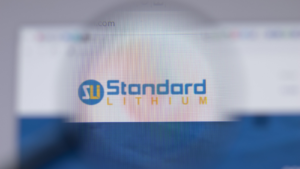There are plenty of 10x stocks with the potential to surge 10x over.
We’ve already seen it happen with Apple (NASDAQ:AAPL), Netflix (NASDAQ:NFLX), Microsoft (NASDAQ:MSFT) and Nvidia (NASDAQ:NVDA). We’ve even seen it happen with Advanced Micro Devices, which ran from an April 2018 low of about $10 to a recent high of $227.30 for a massive return of 2,173%.
We’ve seen it happen with Viking Therapeutics (NASDAQ:VKTX) which ran from a low of about $9 to a recent high of $99.41 thanks to the success of early obesity drug trials.
Stocks just like these exist today. You just need to take the time to do the research and spot hot trends before they become explosive. We’re seeing it happen now with artificial intelligence, which has been responsible for most of the tech stock booms we’ve seen. We’re seeing it with obesity drug stocks like Eli Lilly (NYSE:LLY).
And now we’re seeing it happen with potential 10x stocks like:
Altimmune (ALT)
Source: WHYFRAME / Shutterstock.com
At $6.26, Altimmune (NASDAQ:ALT), a clinical-stage biopharmaceutical developing pemvidutide, a GLP-1/glucagon dual receptor agonist for obesity, is a steal.
For one, it may have the same fiery potential we’ve seen with other obesity drug stocks.
That’s because data from a 48-week trial showed that about 74.5% of weight loss was linked to fat tissue. About 25.5% was linked to lean mass, which may give it a leg up against the competition. “We believe that pemvidutide has the potential to distinguish itself broadly from other therapies for the treatment of obesity,” ALT CEO Vipin Garg added.
After all, preservation of lean mass with weight loss is critical, says the company. If a person loses too much lean mass during weight loss, it can lead to severe medical outcomes, such as musculoskeletal issues and bone fractures, as also highlighted by the company.
That alone could be a major game-changer for a company like Altimmune. Goldman Sachs (NYSE:GS) projects that the obesity market will reach $100 billion by 2030.
Nvidia (NVDA)

Source: gguy / Shutterstock.com
Since June 2000, shares of Nvidia have now been split six times.
It just split 10:1, bringing the stock price down to about $122. The stock split can be a good buying opportunity for long-term investors.
Granted, prior splits failed to excite investors.
In fact, after its 4:1 split in July 2021, investors had the opportunity to buy around $187.30. A month following the split, shares were up about 12%. A year later, shares pulled back. I don’t expect that to happen again, though. Instead, NVDA could easily rocket well above $1,000 again, as it just did earlier this month.
All thanks to growing, explosive demand for artificial intelligence, and NVDA chips. As simplistic as that sounds, NVDA has the potential to rocket higher again with those key catalysts, and strong earnings growth.
The stock split will build further momentum for the AI chip leader and present what one analyst called a “generational buying opportunity,” added MarketWatch.com.
Standard Lithium (SLI)

Source: Postmodern Studio / Shutterstock.com
With the world fighting to go green, we’ll need as much lithium as possible. After all, lithium is one of the keys to a greener future.
We also have to consider that after a considerable drop in the value of lithium, supply and demand issues will force prices higher. Companies like Standard Lithium (NYSEAMERICAN:SLI) will go along for the ride.
For one, according to Statista, global demand could reach 3.8 million tons by 2035. Second, the International Energy Agency says that based on current electric vehicles and battery storage, lithium demand could soar 13 times over by 2040.
Third, according to Canaccord Genuity, lithium prices are “poised to rebound by July.” In fact, “Canaccord says it’s more confident in its current view that lithium has bottomed than it was last May due to production prices for lithium carbonate equivalent recently falling across several producers,” they added, according to NorthernMiner.com.
All could easily send lithium prices and lithium stocks, like Standard Lithium up 10x over.
On the date of publication, Ian Cooper did not have (either directly or indirectly) any positions in the securities mentioned. The opinions expressed in this article are those of the writer, subject to the InvestorPlace.com Publishing Guidelines.










